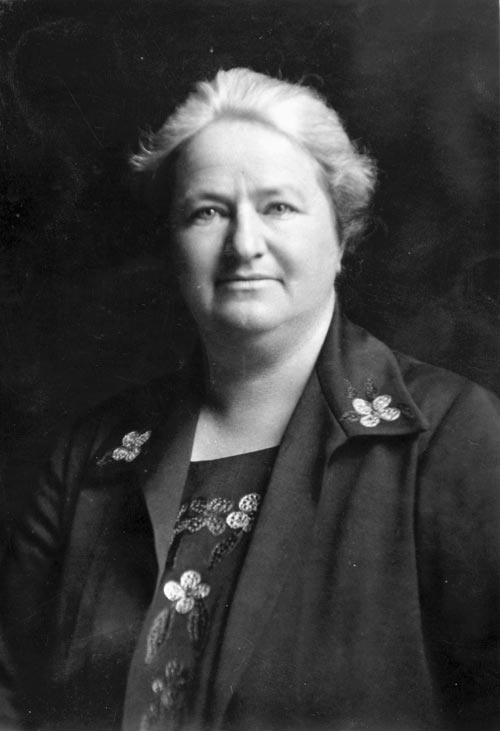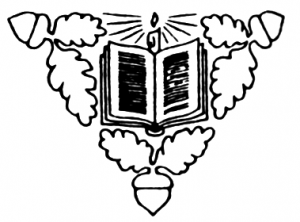This essay written by Felicity McCardle was first published in Women Together: a History of Women's Organisations in New Zealand in 1993.
For nearly half a century, the New Zealand Women Teachers' Association (NZWTA) was the sole champion of the rights of women teachers. Its main focus was the battle with government and the New Zealand Educational Institute (NZEI) over equal pay, but it was also concerned with the education of girls, the need for women inspectors, and promotion opportunities for women teachers. By the 1950s its influence had waned, and it went into recess soon after government service equal pay legislation was passed in 1960.
When a group of women teachers, led by Christina Henderson, met in North Canterbury in June 1901 and agreed to form an association, they were reacting to the report of the Royal Education Commission, which had just proposed the first nation-wide salary scale for teachers. Like all previous salary scales, it was gender-differentiated. The rationale for paying women teachers less rested on three assumptions: they could not carry out the same duties as men because they were physically inferior; they left teaching to get married; and they did not need to be encouraged to stay because there was a surplus of women in the profession. Male witnesses, 'who apparently had a very low opinion of the value of women teachers' work', had given evidence to the commission which 'struck a blow at [their] prestige, already in a parlous state. This had awakened the women to action . . .' [1]
The North Canterbury Women Teachers' Association (NCWTA) asked women teachers in other areas to form associations and petition Parliament for immediate recognition of the principle of equal pay for equal work. A Wellington association formed in September 1901, but women teachers in other areas were not sympathetic. Salaries varied widely between the thirteen education boards, with women teachers in North Canterbury having access to higher positions and larger salaries than were available elsewhere. Women teachers in other areas supported the proposed scale because it provided some improvement in their salaries. Nevertheless, associations did eventually form in Southland (1907), Auckland (1910), and Otago (1912), when women teachers found they could not rely on their NZEI branch to fight for recognition of their work.
The associations grew in strength and numbers, actively lobbying MPs about the unjust salary scale and the lack of promotion for women teachers: 'Outside the infant school, only the poorly paid, hard worked, inferior positions are offered exclusively to women, while all the plums of the profession are retained exclusively by the men.' [2] In 1914 North Canterbury circulated a petition to all other associations, calling for the election of women to the government's advisory Council of Education. Women teachers responded by electing three association members (Phoebe Myers, Nellie Coad, and Emily Chaplin) to the council – a major achievement.
Later that year, women teachers from around the country met and agreed to form the New Zealand Women Teachers' Association. Its aims were to advance the cause of education generally, and that of girls and infants in particular, and to uphold the just claims of women teachers. Myers and Coad were elected president and secretary; an annual conference was to be held prior to the NZEI's annual meeting. Existing associations became branches of the NZWTA, and in the following decade new branches formed in Taranaki, Marlborough, Poverty Bay, Hawke's Bay, Manawatu, Nelson, Wanganui, and Hamilton. At monthly branch meetings, guest speakers and discussions focused on teaching methods and the education of girls and infants. By 1919 there were 734 members. Initially restricted to primary school teachers, membership was extended to secondary teachers in the early 1920s; few joined, however, and the association continued to focus on the primary sector.
Many NZWTA members were active in other women's groups, and the association was itself affiliated to the National Council of Women (NCW) and the Pan-Pacific Women's Association. NZWTA leaders were single women in senior teaching positions, who were noted for their dedication and ability; most were from middle class backgrounds.
From 1914 the NZWTA sent an annual deputation to the Minister of Education, and also advised him on issues concerning the education of girls. The NZEI's suggestion that the institute become the single avenue of approach to the minister was rejected by the NZWTA. Members felt the need to retain a separate voice, as NZEI men often opposed women teachers over issues of salary, status, and promotion, seeing their own needs as more important. Nonetheless, NZWTA always encouraged its members to join the NZEI, and to vote for women representatives. Helen Birss, elected president of the Southland District Institute in 1914, was the first woman to reach such a position, and in 1915 became the first to hold a seat on the NZEI executive.
For over 25 years, the NZWTA lobbied the Minister of Education to appoint women to the primary inspectorate, as allowed for in the Education Act 1914. But although some ministers promised action, and a number of women applied, no women inspectors were appointed: the minister told the NZWTA in 1922 that 'women could not stand the physical strain . . . and would break down'; [3] in 1926 that the women applying were not as well qualified as the successful male applicants; and in 1939 that women did not want to be inspectors. In 1941 applicants for the inspectorate were required to have 'experience in the organisation and management of large schools'; the NZWTA pointed out that this effectively 'rendered [a woman] ineligible because she has not what New Zealand will not allow her to have'. Although the association argued that women inspectors would 'raise the aesthetic standard in . . . schools', no real progress was made until the 1960s. [4]
In its campaign for more senior appointments for women teachers, the NZWTA asked successive Ministers of Education to establish a new position, that of senior class mistress, to supervise girls in the upper standards; this would give 'special attention to the health, morals and manners of the girls', [5] and also give women teachers another opportunity for senior promotion, other than to infant mistress. The requests were not granted, the minister in 1934 giving the additional expenditure as the reason.
In the 1920s and 1930s, the NZWTA continued its attempts to convince male colleagues and successive governments of the injustice of the differentiated pay scale. Women teachers, 'indignant at being rated as cheap substitutes for men', claimed that their work was 'often different from, never easier, and always equal in importance and amount, to that of [men]'. [6] But in 1931, as the Depression deepened, the government excluded five-year-olds from schools and gave education boards the right to dismiss married women. In 1932 the NZEI opposed an unsuccessful move to reduce the salaries of women teachers in primary schools.

Alexander Turnbull Library, PAColl-5469-002.
Elsie Andrews, a prominent and highly active member of the New Zealand Women Teachers' Association.
From 1926 the NZEI had joined the NZWTA in opposing the differentiated pay scale; but in 1935 NZEI men, fearing their own salaries would be reduced, chose to distance themselves from the women's cause and voted to support the pay scale. The NZEI did, however, fight the dismissal of three married women teachers. When five-year-olds were readmitted to school in 1936, the department, foreseeing a shortage of teachers, told education boards to refrain from dismissing married women. In 1947, with men teachers' salaries and conditions no longer threatened, the NZEI resolved to uphold the principle of equal pay, with the provision of an adequate allowance for ‘family responsibility’, paid to men only.
In the 1950s the government's wish to attract more women into the teaching profession added weight to the equal pay campaign, which resulted in the passing of the Government Service Equal Pay Act in 1960. But although the NZWTA continued to support the principle of equal pay, it withdrew from the Council for Equal Pay and Opportunity (CEPO) soon after it formed in 1957, objecting to the council's methods and its politicisation of the issue. By then the association's membership had declined, many branches had gone into recess, and it had become more of a social organisation. But it had convinced the NZEI of the justice of its cause; the institute supported the equal pay campaign on behalf of women teachers, although it was not actively involved in CEPO or in the PSA campaign which eventually won the day.
In 1961 the NZWTA national executive decided to cancel further annual and executive meetings and review the situation in two years' time. In 1964 the association went into recess.
Felicity McCardle
Notes
[1] Chaplin, 1926, p. 11.
[2] Sarah Saunders Page, 'Equal Pay for Equal Work', White Ribbon, 17 May 1911, pp. 9–10.
[3] Deputation to Minister of Education, 24 August 1922, NZWTA records.
[4] Memo for NZWTA executive members, 4 September 1941, NZWTA records.
[5] National Education, Vol. 2 No. 11, 2 February 1920, p. 13.
[6] National Education, Vol. 6 No. 64, 1 December 1924, pp. 434–35.
Unpublished sources
Burton, Felicity A., 'The New Zealand Women Teachers' Association, 1901–1964', MA research essay, University of Auckland, 1986
New Zealand Women Teachers' Association records, 1922–1946, National Archives (E 29/473), Wellington
New Zealand Women Teachers' Association collection, 1912–1964, NZEI Library, Wellington
Published sources
Chaplin, E. A., Our First Quarter Century: 1901–1926: A Retrospective of the Women Teachers' Association of New Zealand, Willis and Aiken, Christchurch, 1926
National Education, 1919–1964
New Zealand Journal of Education, 1899–1918
Simmonds, Edward J., NZEI 100: An Account of the New Zealand Educational Institute, NZEI, Wellington, 1983.


Community contributions